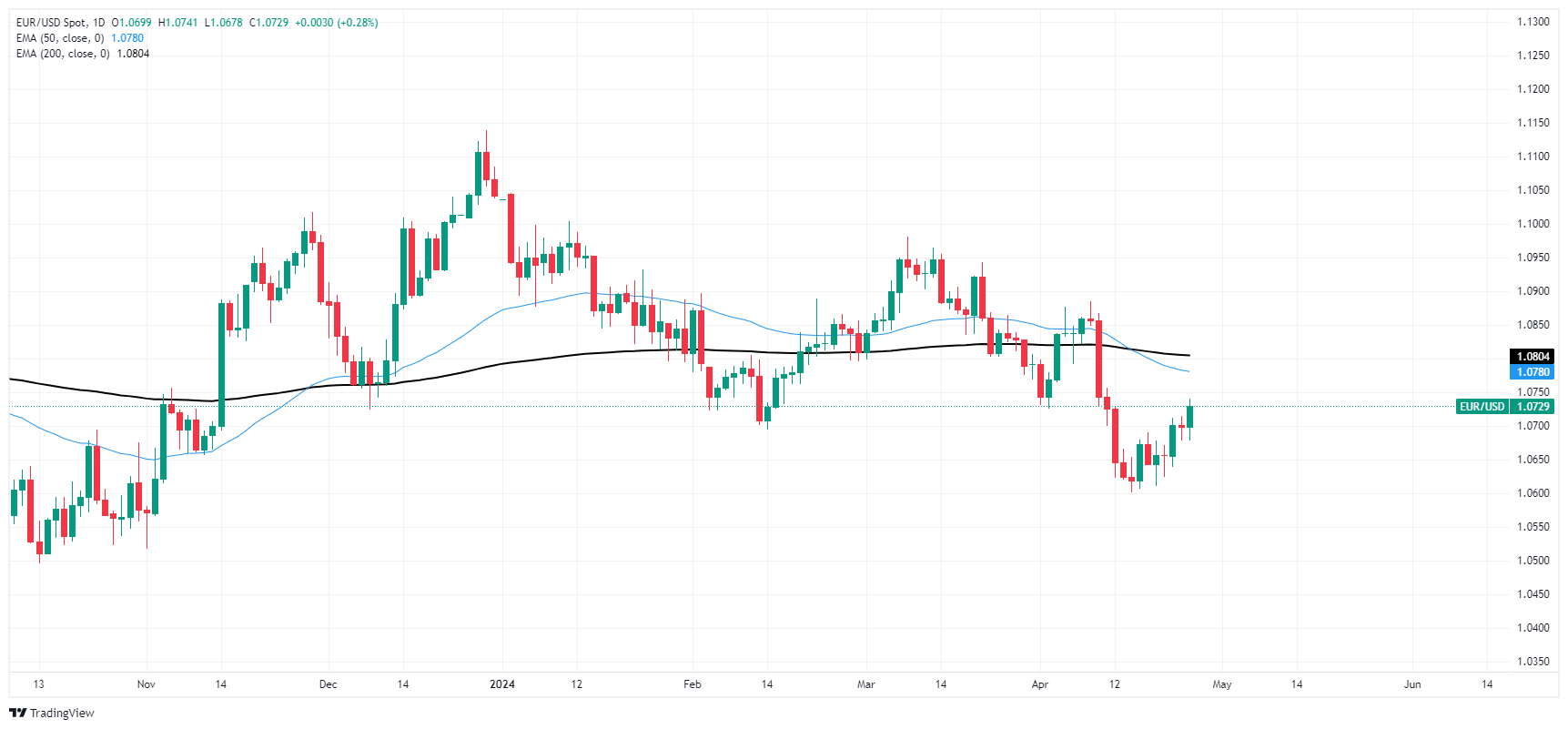- EUR/USD whipped on Thursday after mixed US data plagued markets.
- US GDP slowed faster than expected, but PCE inflation measures warn of still-high prices.
- US PCE Price Index figures due during Friday’s US market session.
EUR/USD whipsawed somewhat on Thursday, and the pair is heading into Friday’s early session near 1.0730 after a back-and-forth session and complicated US data that vexed rate cut hopes.
US Gross Domestic Product (GDP) eased more than expected on Thursday, with annualized Q1 growth slowing to 1.6% compared to the previous 3.4%, and well below the forecast 2.5%. Easing growth is a boon for investors hoping for an accelerated pace of rate cuts from the Federal Reserve (Fed), but too much too fast could send negative knock-on effects throughout the US economy.
Hopes for rate cuts were further eroded after US Personal Consumption Expenditure (PCE) inflation accelerated again in the first quarter, with Q1 PCE rising 3.4% compared to the previous quarter’s 1.7%. Still-high inflation is reducing market hopes for rate cuts, sending risk appetite into a tailspin during the US trading session before markets staged a determined but limited recovery.
Friday brings mostly low-tier European data, and markets will be turning to face US PCE Price Index figures for March as investors look for a more fine-tuned look at the US’ inflation outlook. Core MoM PCE Price Index figures in March are expected to hold steady at 0.3%, with the annualized figure forecast to tick down slightly to 2.6% from 2.8%.
EUR/USD technical outlook
EUR/USD churns just north of the 200-hour Exponential Moving Average (EMA) at 1.0690, but Euro bidders are scrambling to keep the pair propped up beyond the 1.0700 handle. A near-term supply zone is priced in between 1.0880 and 1.0860, keeping interim bullish expectations pinned to the low side.
A recent drop below the 200-day EMA at 1.0795 threatens to crimp bullish sentiment despite a technical floor priced in near 1.0600.

